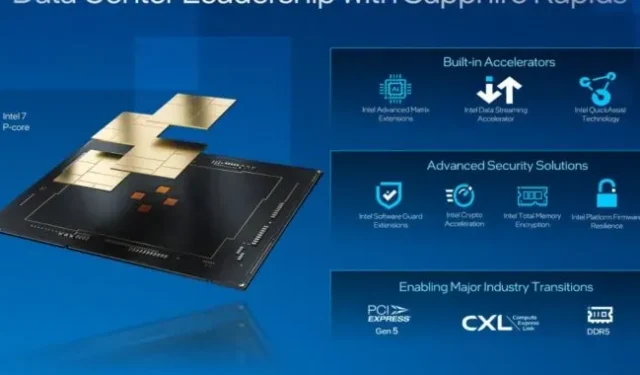Frequently delayed Intel Xeon Sapphire Rapids processors are finally coming in early 2023

The release of the new generation Intel Xeon processors based on the new Sapphire Rapids architecture has been delayed several times, but Intel is finally preparing to start selling them to PC manufacturers and end users. According to Intel’s post on the announcement on Twitter, the “data center launch event”on January 10th will include Sapphire Rapids processors, and the chips are currently “ qualified for product release and the company is starting to ramp up deployment.”
Sapphire Rapids processors, also referred to as “Xeon Scalable”or 4th generation Xeon, were originally scheduled to be released in late 2021, but by mid-2021, this became Q1 2022 and then “later in the year than originally predicted “. and now the beginning of 2023. We still don’t know when the chips will actually start shipping, only that we’ll get more information in January. Delays like this are fairly common for Intel, which has also struggled to release its Arc-targeted desktop GPUs on time and has experienced repeated production setbacks over the past decade.
In an interview with The Verge last month, Intel CEO Pat Gelsinger spoke of the Sapphire Rapids delays, implicitly blaming previous leadership and pointing out that future products won’t have the same bumpy rollout.
“This project was started five years ago, so it is in progress. I can’t just reset the methodology of a product that started five years ago,” Gelsinger said. “[Sapphire Rapids] was too complex, with three major new systems or interfaces in that design.. . and none of them were backed up.”
Sapphire Rapids is a distant cousin of the Alder Lake (12th generation) processors that have been in laptops and desktops for a year or so. no low power cores) and the same Intel manufacturing process 7. We can reportedly expect up to 60 cores for data center CPU versions and up to 56 cores for workstation versions at TDPs up to 350W. But Intel’s delays have made the chips less competitive than they would have been had they launched earlier this year. Next generation AMD Epyc CPUs for servers (codenamed Genoa) will offer up to 96 Zen 4 cores per CPU when they launch later this month, while current generation Threadripper processors already have 64 cores.
Other Sapphire Rapids features include DDR5 memory support, PCI Express 5.0 connectivity, and Compute Express Link (CXL) 1.1 support, all features that AMD Genoa will also support. (These were the “three major new systems”that Gelsinger spoke of in his interview.)
From an architectural standpoint, one of the most notable features of this chip is that it is Intel’s first foray into chiplet-based processors—each processor is actually made up of multiple silicon dies connected by a high-speed interconnect. AMD has taken a chipset-based approach to all of its Ryzen, Threadripper, and Epyc processors, and this could be a way to improve manufacturing performance; if there is a fatal defect in the chiplet die, you have to throw away much less silicon than with a similar defect in one huge monolithic processor die. It also allows you to mix and match manufacturing processes, so you can use the advanced process for things that will benefit the most from it (like CPU and GPU cores),
Intel will rely even more on chiplets, starting with the 14th generation Meteor Lake processors, which will combine a mixture of “tiles”created using different manufacturing processes in a single processor.
Leave a Reply